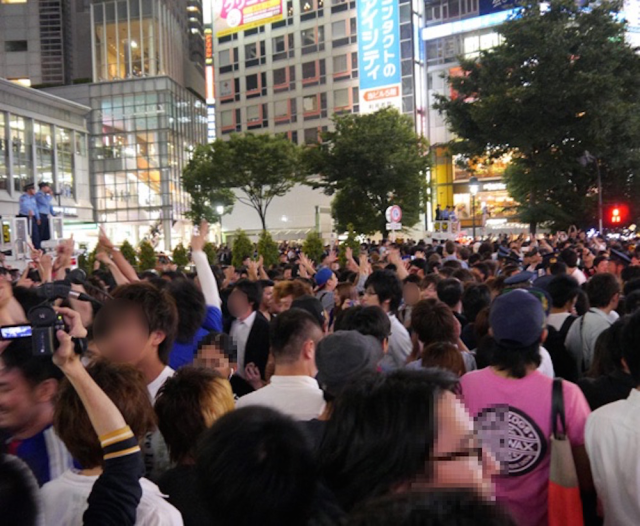
Being in the biggest city in Japan means you’re probably sharing the walkway with more people than you’d like, but here’s how to make things easier.
Tokyo is an easy town to get around, in the sense that there are dozens of train and subway lines crisscrossing the city with reliable, affordable rail service. But sometimes it’s not such an easy town to get around once you get off those trains, because when you step out of the station you might be stepping directly into a sidewalk-clogging mass of humanity.
Navigating Tokyo comfortably requires you to not only be familiar with the closest station and exit to your desired destination, but also how to walk through the crowds of other people you’re sharing pedestrian pathways with. Thankfully, our reporter Takashi Harada, who grew up in Fukuoka (which, even with a population of 1.5 million residents, pales in comparison to Tokyo’s 13.6 million) has developed a few strategies since moving to Japan’s capital, and below are his five recommended techniques for speedy, stress-free striding through Tokyo.
1. The slipstream
The first step to becoming a better walker is, ironically, to pretend you’re a car. Much like how racers draft behind opponents to reduce wind resistance, by staying close behind someone who’s headed in the same direction as you are you can take advantage of the pocket of empty space that’s directly behind them, as long as you follow closely enough that the rest of the crowd hasn’t filled in the void.
In particular, Harada recommends walking behind successful salarymen in their 40s or 50s, who tend to wear suits and walk with broad-shouldered confident posture, thus cutting a comparatively wide path through the crowd. Conversely, he cautions men using the slipstream technique against following closely behind a woman, since it might look like you’re trying to stalk her.
2. The basketball player
Of course, not everyone is pointing their feet towards the same goal as you are. Some of them are going to be moving in the opposite direction, and in a large enough crowd, at some point you’ll probably find yourself and someone else heading right towards each other.
At these times, Harada recommends taking light yet quick and decisive steps, like a basketball player trying to sidestep an opponent. If you stop and shuffle your feet, the other person will probably do the same and you’ll end up mirroring each other so that neither one of you can make any forward progress.
3. The shoulder signal
OK, but what if you and someone else do end up stopped and facing one another in a crowd? In that case, one of the easiest ways to signal your intended course is by tiling your shoulders in the direction you want to go. Sure, you could point or extend a hand, but that riskes the miscommunication of whether you’re gesturing to say “I’m going this way” or to tell the other person “Please, go this way.” The shoulder tilt also takes up less space than using your whole arm to point.
Remember, while the tilt needs to be large enough to be noticeable, it should still be small and momentum-free enough that it doesn’t become a full-on lunge.
4. The detour
There’s a Japanese saying, “Isogaba maware,” which is sometimes translated as “Slow and steady wins the race.” Literally, though, “Isogaba maware” means “If you’re in a hurry, go around,” indicating that the absolute direct route isn’t always the fastest.
When plotting a walking route in downtown Tokyo, the biggest streets are always going to be the most crowded, so sometimes you might actually be better off cutting over a block and taking a smaller, parallel road, then heading back onto the main street only when you have to. Not only will you be able to walk more quickly because of the lack of crowds, you might even find something you never would have otherwise on your trip off the beaten/crowded path.
5. The people you’ll want to avoid
Finally, it’s important to remember that even though you’re focused on getting to your destination, other people walking through the crowd might be more focused on their smartphones. Despite some innovative attempts to raise awareness of the dangers of fiddling with your phone while walking, you’ll still find a number of misguided multitaskers in any large group of pedestrians, and they’re the ones most likely to bump into you or someone else, creating a chain reaction pileup that ripples out far around them. As such, you’ll want to keep an eye out for them and give them a wide berth, at least until the Tokyo Metropolitan Government approves the use of ninja murder squads to punish people for using their phones in this manner.
Photos ©SoraNews24
[ Read in Japanese ]
Follow Casey on Twitter, where whenever he has to walk through a crowd, he imagines that he’s playing a bullet hell shooter.